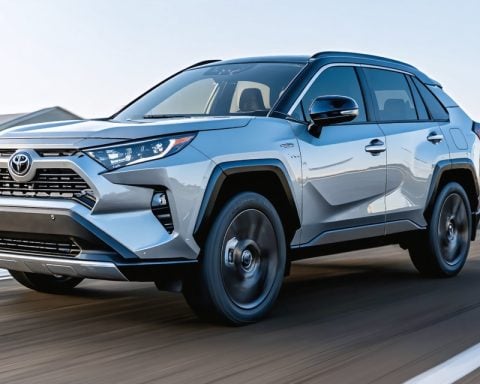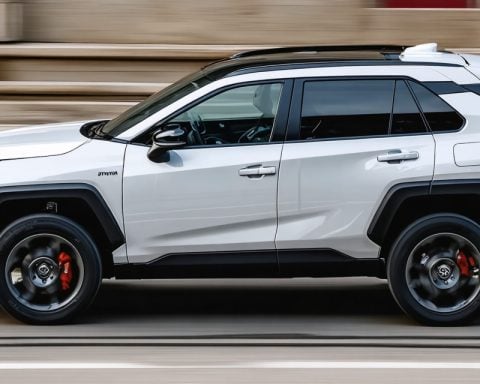Declining Demand and Price Adjustments Ahead
With news from industry experts indicating declining interest in the Tesla Cybertruck, the electric vehicle market is entering a state of uncertainty. A recent analysis from Morgan Stanley highlighted that the unique design, once a significant draw, no longer captivates potential buyers as it did during its initial launch.
Morgan Stanley’s note pointed to falling sales volumes for the Cybertruck, contributing to a cautious outlook for Tesla’s growth in 2025. Projections suggest that the anticipated increase in volume may only reach around 10%, significantly lower than previous predictions of 20%. Factors affecting these estimates include competition in the EV sector, particularly from China, and potential shifts in government incentives for electric vehicles.
In 2024, the Cybertruck managed to secure the position of the fifth-best-selling electric vehicle in the United States, selling nearly 39,000 units. However, this figure highlights that reaching this rank did not require overwhelming sales numbers, especially against competitors like the Ford F-150 Lightning, which is priced significantly lower.
To reignite interest in the Cybertruck, price adjustments are likely. Scenarios include a direct price reduction, attractive financing offers, and revamped leasing options. Tesla might even consider reintroducing a more affordable rear-wheel-drive variant previously listed at $60,990. As Tesla continues to navigate this shifting landscape, consumer attention will be crucial to the Cybertruck’s future.
Implications of the Cybertruck’s Decline on Society and the Environment
The declining demand for Tesla’s Cybertruck underscores shifting trends within the automotive landscape that could reverberate through society and the global economy. As electric vehicles become mainstream, the waning interest in a once-promising model highlights the volatility of consumer preferences driven by design, functionality, and competitive pricing. This shift may compel other manufacturers to reconsider their strategies, leading to an intensified race for innovation that could catalyze advancements in vehicle technology—particularly in sustainability and efficiency.
While decreased sales may signal challenges for Tesla, they can also reflect a crucial moment for the entire EV market—one that encourages manufacturers to improve their offerings in order to capture the evolving desires of consumers. As companies vie for market share, there is potential for significant environmental impacts, either positive or negative, depending on how firms approach production, recycling, and resource utilization. A focus on sustainable practices, rather than solely profit-driven motives, can substantially influence the carbon footprint of manufacturing processes.
Moreover, as government incentives fluctuate, emerging trends may diverge into new markets or technologies. Long-term, the trajectory of electric vehicles may drive a greater demand for alternative energy solutions and smart city integrations—transforming urban landscapes into hubs that prioritize eco-friendliness over traditional fossil fuel reliance. The outcome will define not only market dynamics but also set the stage for cultural shifts toward sustainability, responsiveness to consumer behavior, and the communal responsibility of fostering a greener future.
The Future of Tesla Cybertruck: Market Predictions and Strategic Moves
Declining Demand and Price Adjustments Ahead
The Tesla Cybertruck has generated significant buzz since its initial reveal, yet recent evaluations indicate a cooling interest among potential buyers. As the electric vehicle (EV) market evolves, various factors are influencing Tesla’s position and strategies in the marketplace.
Market Trends and Analysis
A comprehensive analysis by Morgan Stanley suggests that sales volumes for the Cybertruck have experienced a notable decline. This trend raises concerns about Tesla’s growth trajectory as we approach 2025, with projections estimating a merely 10% increase in sales volume, a considerable dip from earlier forecasts of 20%.
Competitive Pressures: One of the challenges for the Cybertruck is fierce competition, particularly from Chinese manufacturers who are continually innovating and releasing value-driven EV models. Additionally, potential shifts in government policies and incentives for electric vehicles could further impact demand.
Sales Performance and Comparison
In 2024, the Cybertruck emerged as the fifth-best-selling electric vehicle in the U.S. market, selling nearly 39,000 units. While this placement is noteworthy, it highlights a broader trend within the EV sector where high sales volumes are becoming increasingly difficult to achieve, especially against rivals like the Ford F-150 Lightning, which offers a competitive price point. Such dynamics reveal the challenges Tesla faces as it strives to maintain market share.
Strategic Adjustments: Pricing and Offers
In response to declining interest, Tesla is exploring price adjustments as a means to rekindle consumer interest. Several scenarios are on the table, including:
– Direct Price Reductions: Lowering the pricing of the Cybertruck to make it more competitive.
– Attractive Financing Solutions: Implementing financing options that could make the purchase more appealing.
– Revamped Leasing Programs: Providing enhanced leasing terms to attract new buyers.
– Reintroducing a Budget Model: Tesla may consider bringing back a more economically accessible rear-wheel-drive variant previously priced around $60,990.
These adjustments aim to address the changes in consumer preferences and to stimulate sales in a tightening market.
Limitations and Consumer Insights
While Tesla’s innovations have historically set them apart, the current limitations include the company’s dependency on unique design features that no longer hold the same appeal. Understanding consumer insights is critical for Tesla to evolve its marketing and product strategies effectively.
Sustainability and Security Aspects
With increasing consumer awareness regarding sustainability, Tesla’s initiatives toward environmentally friendly manufacturing processes will play a crucial role in positioning the Cybertruck favorably in the eyes of eco-conscious consumers. Additionally, Tesla needs to ensure that its vehicles meet robust security standards to maintain buyer confidence amidst concerns over EV safety and hacking vulnerabilities.
Future Predictions for Tesla Cybertruck
Looking forward, the success of the Tesla Cybertruck will depend on Tesla’s ability to adapt to market changes. Innovating on design, adjusting pricing strategies, and improving customer engagement will be vital as the company navigates this transitional phase. As the EV landscape continues to shift, those in the market must closely monitor how Tesla evolves amidst growing competition and changing consumer preferences.
For more insights into the electric vehicle market and ongoing innovations, visit Tesla’s official website.













